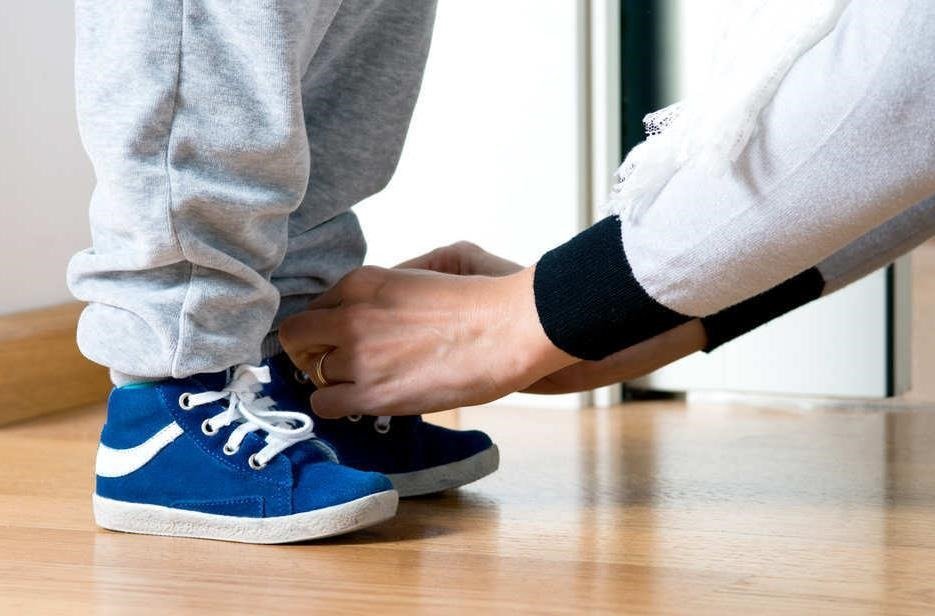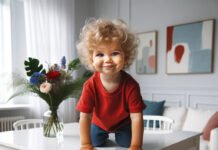Choosing the most appropriate footwear for a baby or child is essential for their proper growth, especially choosing options based on their age and development.

Although they tend to move barefoot on most occasions, babies also need shoes to protect their feet and especially when learning to walk. Both for when they are a few months old and when they are growing, they should put on the right shoes, adapted to their feet, because this can reduce their health and little ability to move as they grow.
When learning to walk, sturdy shoes with slightly thicker soles help the little one to make footsteps and maintain balance. Now, a sneaker is not the same as an English or flats shoe, which are preferred for parties and other events.
At school or at kindergarten, sneakers are a hit, it is always better to buy a foot size that does not go too tight.
When choosing shoes it is better that they are light and low, that they are not fair, that the sole must be made of a flexible material, while the buttress can be reinforced to better support the ankle.
What shoe to choose for the baby or the child?
At school and for sports
When the child must play sports, they need a shoe adapted to each type of sports discipline. That is to say, a rather strong shoe but very comfortable at the same time that it lets you run, move and move at your leisure. There are shoes with rubber toes that are perfect for going up and down stairs, playing circuits … They usually have rubber soles and protect the child from somewhat destabilized floors.
For school, footwear that is easy to take off and put on is feasible, and that facilitate the child’s autonomy. Those boots in boot format are intended for somewhat more specialized sports such as soccer and other sports that involve travel.
One of the advantages of these shoes is that they will never come off your foot, and they are well tied with laces or Velcro. The models of fabric pepitos shoes are in the shape of a boot, although they are somewhat thinner shoes, so perhaps they are not so appropriate for doing a lot of sports but they are for daily use, even with socks, as long as the shoe not too tight.
Finally, hiking boots are necessary in all stages of life. Babies should also wear them, as they are usually waterproof, breathable and protect the foot from the stones of the paths.
Comfort at home
Many pediatricians recommend that during stays at home the child can go barefoot, without ties, so that the foot breathes and is even more comfortable. However, in the months of autumn to winter, babies, especially, can get colds more than normal if they do not wear the right shoe.
The Hospital de Nens Foundation establishes that the clothing material must be breathable and you must always be careful not to cause chafing on the skin as it could cause wounds, eczema and fungal superinfection.
Those moccasin-type shoes, but basic, without flourishes or suitable soles, are quite favorable for moving indoors. There are also smoother and flatter sneakers, and woolen booties or made of other somewhat more comfortable and ergonomic materials, so that the little one can rest the foot but always with some protection.
Some physiotherapists agree that the shoe is better if it reaches below the lateral bones of the ankle. And, if we buy a boot, it must be flexible so that the child can fully move the ankle joint.
In a party
There are plenty of special shoes for the baby to be elegant. On the one hand, you have to make sure that they are made of the right materials, that although they last less as the child grows, they will be resistant to the passage of time.
The ballerinas are very pretty and delicate, especially suitable for girls. While moccasins are the most traditional shoes for children, they can combine very well with long pants. It is better that they are made of leather and in different shapes, classic or the models with boots, somewhat taller.
Boating is fun for kids. There are a variety of colors that can be combined with the most elegant or informal clothing. When buying these shoes, we should not only think about the appearance of the shoe, as it is intended to be worn on more than one occasion.
They can have double soles and insoles that make the foot sweat less, and therefore, prevent the child from developing some discomfort. Buckle shoes, both for them and for them, hold the feet. Although it is advisable to follow the shoemaker’s instructions to stay with those pairs that do not deform the shape of the foot, as it is growing and is being formed.
Bluchers shoes can be used well for special occasions or to go to school. As long as they are not too tight and closed, they usually adapt well to the child’s feet and, by wearing laces, they are easier to tighten.































